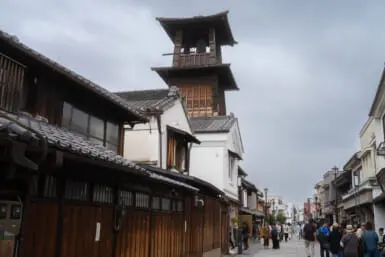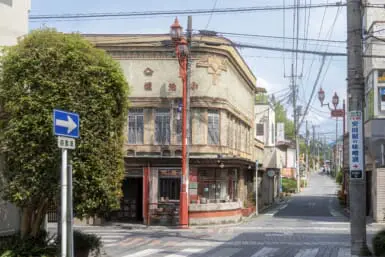by Elyse M. Rogers
TOKYO WATER DEPARTMENT
Turning on the tap and having a healthy, pleasant-lasting supply of water is something most of us take for granted. But, as you might have suspected, a lot goes on before that water is delivered to our kitchen sink or steaming ofuro.
I’ve had readers ask about the composition of the water and whether or not it is healthy to drink it without specially filtering or otherwise treating it in the home. Some have even wondered if they should drink bottled water instead of tap water.
To find out the answers to some of those questions, I interviewed Masaru Yamada, of the Advertising Section of the Bureau of Waterworks of the Tokyo Metropolitan Government. He not only answered specific questions, but gave me the “big picture” as well.
HISTORY OF TOKYO WATER SUPPLY
Way back in the 15th century, when Tokyo was a group of villages clustered around a small castle overlooking Tokyo Bay, people relied on brooks and wells for drinking water. When Ieyasu Tokugawa, founder of the Tokugawa Shogunate, made Edo (old name for Tokyo) his home in 1590 he realized the need for establishing a waterworks system. Most wells, particularly in reclaimed land, produced only salt water not fit for drinking.
The Kanda Canal was created, which became the first water supply system in Japan. When more water was needed, it was diverted by a 43-kilometer open channel from the Tama River.
In 1868 Edo was renamed Tokyo and, as the city expanded, the old water supply channels were insufficient and polluted. In 1886, a major cholera epidemic struck Tokyo with considerable loss of life, and after that plans were made to construct a truly modern waterworks system.
It was in 1898 that Tokyo’s first modern waterworks system become operational. Initially the system supplied 1.5 million people at the rate of 170,000 cubic meters per day. By comparison, in 1984, more than 11 million people received water at the rate of 5-6 million cubic meters per day.
THE MODERN SYSTEM
Today, Tokyo’s water supply comes from three sources: 1) The Tone River (more than 76%), 2) the Tama River (19.5%) and 3) the Sagami River (3.6%).
Since Japan’s rivers are short and flow rapidly, catching water quickly enough is a big problem. Although expansion is planned with new reservoirs in Gumma and Saitama prefectures, it takes time for those to materialize because of people problems and questions of land ownership.
Currently, the whole Tokyo water system has a capacity of 6.63 million cubic meters per day, which may sound like a lot until you learn that we Tokyoites use six million cubic meters on summer’s hottest days! So, the present system is a tight one and, if rain is scarce, a water shortage ensues.
The system is a myriad of rivers, dams, reservoirs, aqueducts, weirs and pumping stations. For a more detailed view of Tokyo’s complex water system, see the schematic drawing above.
You will note that the Tone River is the longest of the three rivers and is actually a complex system with much of the water provided by the many rivers that feed into it. In addition, channels, aqueducts and weirs control how the water is collected and how it is diverted and /or directed to specific areas. This system supplies the majority (more than 76%) of Tokyo’s water.
The Tama River has been a source of drinking water for Tokyo since 1654, with three reservoirs (all completed by 1934) and a newer Oguchi Dam system completed in 1957. This system supplies 19.5% of Tokyo’s water supply. During the last water shortage, the Tama River was very dry and water supplies from that system were almost nil.
Tokyo buys raw (untreated) water from the Sagami River System from the Kanagawa Prefecture Government and Kawasaki Purification Plant (built in 1969). Water from this system accounts for less than 4% of Tokyo’s water supply.
You might be wondering, as I did, if there are homes and establishments that aren’t hooked up to city water in Tokyo – such as people with wells. According to the statistics Yamada showed me, 99.9% of all water is supplied to Tokyo’s 23 ku (wards) by the city system.
A CLEAN HEALTHY WATER SUPPLY
Many readers have asked me just how they can tell if the water they get from their tap is healthy and germ free. So, I’m glad to pass on the good news that all Tokyo water is properly treated by one of the two standard treatment methods (the process takes 8-10 hours in huge purification facilities). The water is checked after it leaves the plant, plus spot checks are made at 68 places in Tokyo, daily, to make sure it meets legal standards of purity.
So, the water that comes into your building is top notch. A problem, however, may arise inside the building particularly when there are large holding tanks or such (as in apartment complexes in which many of us live). These “inside” facilities are not controlled by the water department, but they are controlled, under law, by the hoken-jo which is the health insurance agency.
If you have any doubts about your complex’s water supply, I’d suggest you get the local hoken-jo office to test your water. As is everything else in Tokyo, this is a bit complicated. First, you must call 104 (in Japanese) and get the number of the hoken-jo office nearest your home. Then you must go to that location and get special bottles for water samples. (You can’t use you own bottles for collection.)
After taking a water sample in your home or apartment you must return the bottles to the hoken-jo for testing. There is a charge for this service that varies from ward to ward but averages about ¥5.000.
WATER CONSERVATION
Water conservation is a very real need in Tokyo and one that is too often forgotten. It’s easy to think of water from the tap as an infinite resource that is “free” and therefore we can indulge ourselves in using it copiously and not give it a second thought. Sadly, it usually takes a water shortage to remind us that water really is a precious, limited resource.
It is not only that we are dependent on Mother Nature to supply the raw materials in the form of rain or snow, but we are also dependent on man’s ability to collect, treat and deliver it to our homes.
During this past summer’s water shortage, even the vast resources of the Tone River System were badly hit. They were down to 13% of their total water reserves, according to Yamada, and the huge Yagisawa Dam holding facility (effective capacity of 175 million cubic meters of water) was down to 0%. Dry, that is.
This summer, the city cut the water supply to Tokyo wards by 15% during the hours from 10 p.m.-6 a.m. Fortunately that measure and voluntary water conservation was enough. If the situation had become more serious, the city would have cut the water supply 15% during the hours of 1 to 5 p.m. as well.
The most severe water shortage on record occurred in 1964 (when the Tama River system was the city’s only system) and the city government was forced to severely ration water. At that time, the water was turned on only five hours every day.
In case you feel that “one person or family can’t make a difference” and consider your own water conservation unimportant, you might be surprised to learn that the average family of four uses 22 tons of water each month. If that same family turned off the water (instead of letting it run) while they brushed their teeth, it would save one ton monthly.
Water conservation helps the budget too, since the average monthly cost of water and sewage in Tokyo (again, for a family of four that uses that 22 tons of water) is ¥4,700.
EARTHQUAKE PROBLEMS
Purification plants and main water-delivery structures in Tokyo are built to withstand earthquakes; however, during a major earthquake, water mains and pipes would probably be damaged. There are ongoing efforts to minimize potential damage by replacing old pipes and mains with more earthquake-resistant materials, but since there are more than 20,000 km. of mains and sub-mains, it’s a huge project.
If water supplies were cut off after an earthquake, there is an emergency water supply program that would go into effect. At the central earthquake-supply station in your area (you should know where yours is located—if you don’t, ask at your ward office) trucks will bring in supplies of fresh water from the 25 emergency reservoirs built near these stations. Yoyogi Park, for example, is one supply station.
Each emergency reservoir holds 1,500 tons of water and can supply half a million people per day.
Yamada (and other earthquake experts) suggest you keep a supply of water in your home as part of your Earthquake Preparedness program. If you keep it in a jar or bucket (some wards provide special plastic buckets) you should change the water every three days to prevent it from growing harmful bacteria. Since one person needs approximately three liters of water per day, you’ll want to have at least one day’s supply for each family member on hand.
If you’re wondering how you’d possibly fit “changing the emergency water supply every three days” into your already too-busy schedule. I’ll give you a hint. Buy packaged bottled water that lasts for a year or so, and put a case or two in the back of the close.
You might want to keep in mind that the water in the toilet holding tank (above the bowl) is fresh and clean (although it may not seem very appealing) and can be used in an emergency. So can water in a U.S.-type large water-heater; but most Japanese heaters do not store water but merely heat it as it passes through the pipe.
The first day of August in Japan has been designated National Water Day, but let’s try to think a bit about conserving water every day.








